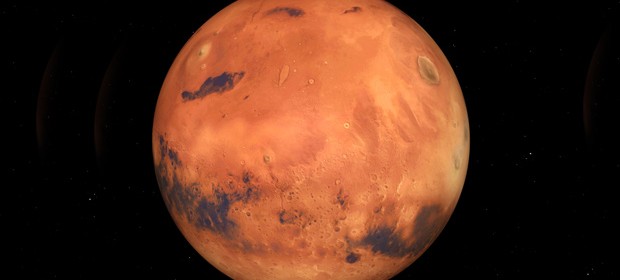In last month’s installment, we profiled Orion’s rival Scorpius. This month we return to it to watch a stunning display of planetary motion happening right in the heart of this summer constellation. And a telescope isn’t needed to see it happening—just the unaided eye, and perhaps a pair of binoculars for a closer view!
As most readers are aware, the word “planet” comes from the Greek for “wanderer.” The five naked-eye planets are indeed wanderers, constantly on the move around the sky’s ecliptic pathway. Fastest of them is elusive Mercury, but second to it and much easier to see is ruddy Mars—especially around the time of “opposition” to the Sun when closest to us (which actually occurred just two months ago). Ancient sky-watchers were perplexed by the movement of the planets and it took centuries before their true nature as other Earths orbiting the Sun was finally unraveled. (Many people today are still mystified by their motions. But we can forget the complex orbital mechanics involved and simply enjoy the spectacle they present!)
As mentioned last month, Scorpius’ luminary—the fiery red super-giant star Antares—is currently flanked by Saturn above it and Mars to the right of it. The Red Planet is rapidly moving eastward each week this month against the background of stars. On the evenings of August 23rd and August 24th, Mars will actually pass between Antares and Saturn! Its movement from hour-to-hour with respect to the star and planet should be evident in binoculars with careful observation. (This motion will be even more evident in a telescope, but it will require one with a low power and very wide field of view to encompass all three objects.) Even a casual look from one evening to the next will show the change in Mars’ position. What a thrill seeing worlds move with our very own eyes!
We should also mention since these planet are currently well-placed for viewing in a telescope that Saturn’s majestic rings can be seen at just 25X to 30X, looking like an exquisite tiny piece of cosmic jewelry! And one of the Martian polar ice caps, orange deserts and dark markings can be glimpsed at around 100X given good seeing conditions (atmospheric steadiness).
Before closing, a reminder that the annual Perseid Meteor Shower will be active from the late evening of August 11th until dawn begins on August 12th. The presence of a First-Quarter Moon will brighten the sky and interfere to some extent until it sets around 1:00 a.m. local time. A “shooting star” per minute on average can be expected once the sky has darkened.
— James Mullaney
Former assistant editor at Sky & Telescope magazine & author of nine books on stargazing. His latest, Celebrating the Universe!, is available from HayHouse.com


